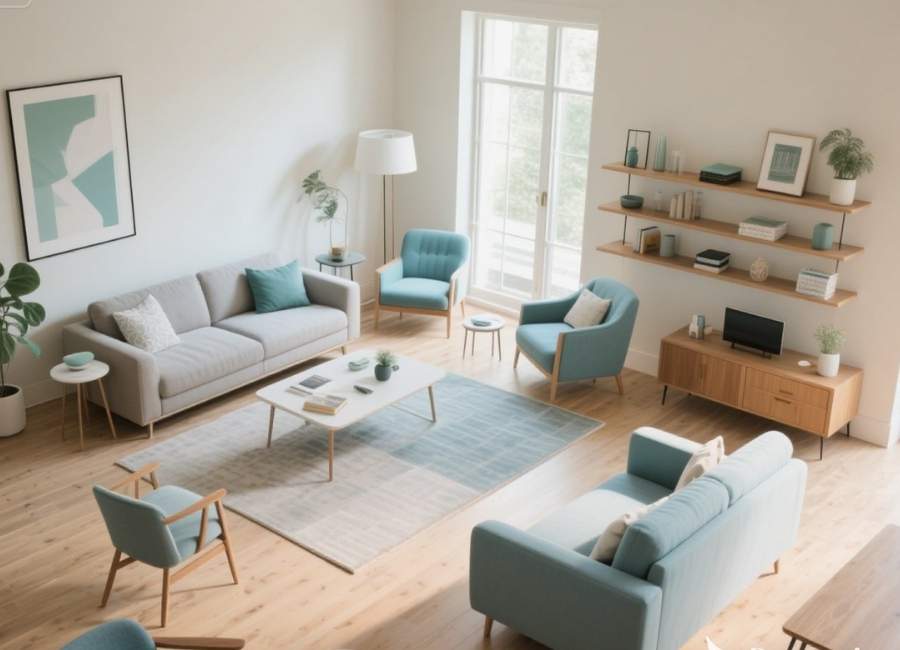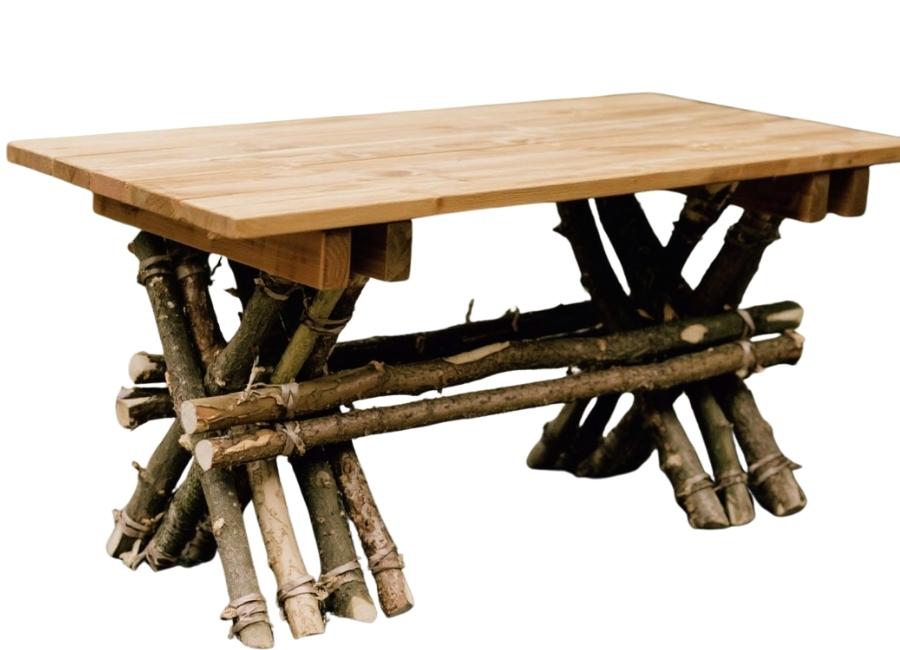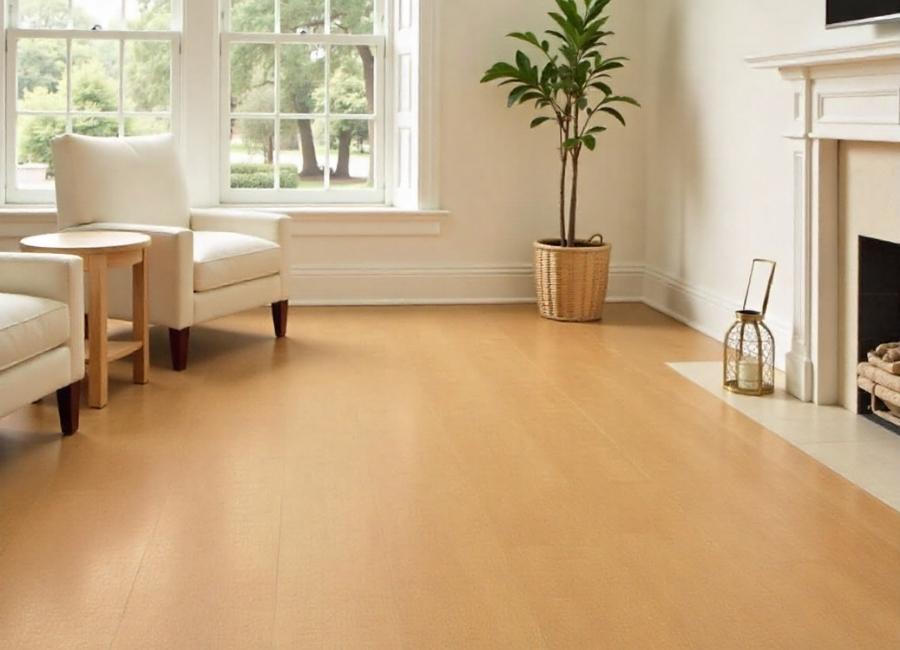Starting from scratch with a room can be a lot to take on. There are so many things to think about, like colors, styles, furniture size, and where everything should go. It’s easy to end up with a space that doesn’t feel quite right—either too much like a showroom or a mix of pieces that don’t fit together.
The secret to a great-looking and practical room is to plan carefully. When you take time to figure out what you need, choose your style, and think about your layout, you’ll pick furniture that looks good and works for your life. This guide will show you, step by step, how designers choose furniture so you can create a home you really enjoy.
Following a structured approach will help you avoid common mistakes, manage your budget wisely, and bring your vision to life. Ready to transform your space? Let’s get started.
Step 1: Define Your Needs and Lifestyle
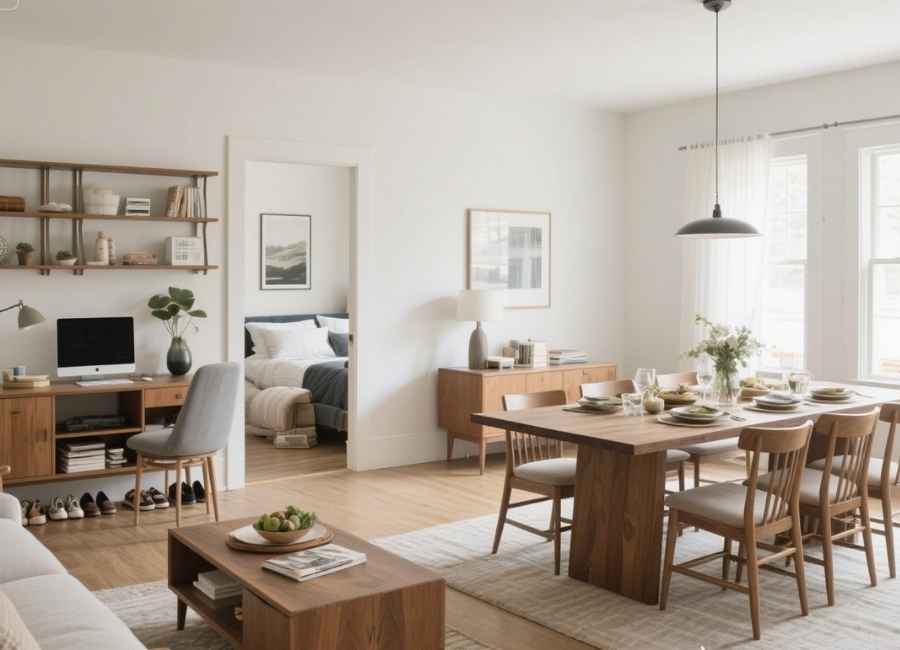
Before you start shopping for furniture, take a look at your space and think about how you use it. Even the best-looking room won’t work if it doesn’t fit your daily life.
Analyze Functional Needs
Think about what you want the room to be used for. Everyone’s needs are different, so this will change from person to person.
- For a living room: Do you need a place to work, extra storage for shoes by the door, or a large seating area for entertaining guests?
- For a dining room: Is a six-seater Table for dinner parties a priority, or is a smaller, more intimate setup sufficient?
- For a bedroom: Is your primary need a tranquil place to sleep, or do you also need a reading nook or a small desk?
Focus on what you need the room to do first. This way, your furniture choices will be useful and make sense for your life.
Consider Your Lifestyle
Your daily routine should shape your design choices. For example, someone who works from home will have a different setup than an artist or someone who loves to host guests.
- If you spend a lot of time at home, it’s worth investing in furniture that’s both comfortable and built to last.
- Do you enjoy entertaining? Flexible seating arrangements and durable surfaces might be key.
- Do you watch a lot of TV or prefer reading in bed? This will dictate the layout and focal points of your living room and bedroom.
- Whether you cook every day or just once a week will affect how you set up your kitchen and dining spaces.
Look at the furniture you already have and decide what you want to keep or let go. Set a budget that works for you. Knowing your spending limit from the start helps you use your money wisely and avoid spending too much on one thing.
Step 2: Find Your Style and Create a Mood Board
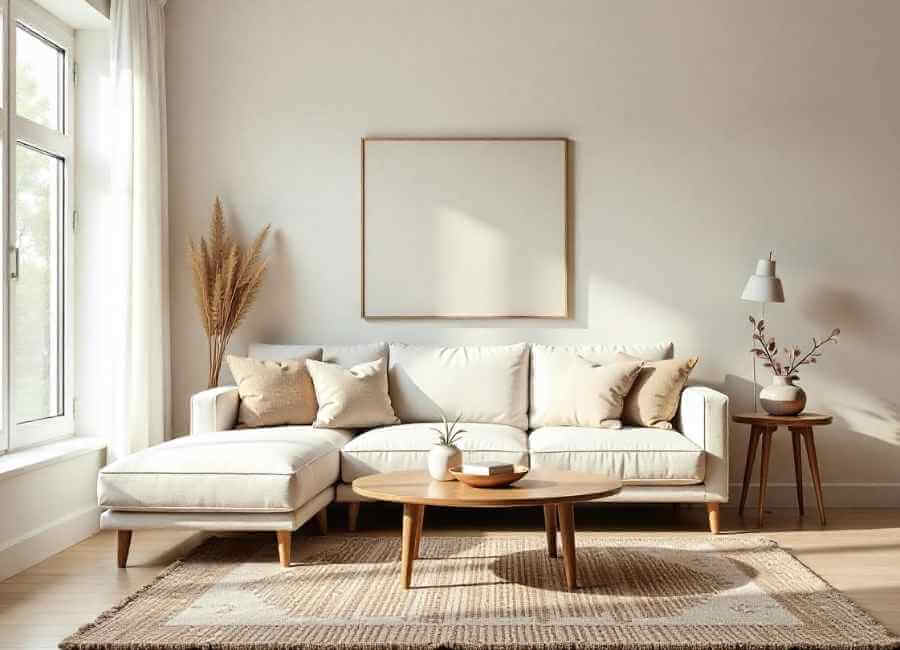
After you know what you need from your space, it’s time for the fun part—figuring out your style. Having a clear look in mind will help you pick furniture that goes well together.
Gather Inspiration
Pinterest is a great place to start. Make a board for your room and pin anything you like. Don’t worry too much at first—just save images for their style, color, furniture, or overall feel. As you pin more, Pinterest will suggest new ideas for you.
Once you have plenty of images, look over your board and see what styles keep popping up. Maybe you like minimalist looks, boho textures, or mid-century shapes. Remove any images that don’t fit to help focus your style.
Organize Your Ideas
To organize your ideas, try a tool like Milanote. You can make boards, add images and notes, and arrange everything how you like. Their web clipper lets you save images straight from Pinterest or shopping sites.
If you’re not sure about your style yet, look at each pinned image and write down what you like about it. Maybe it’s the wall color, the sofa’s shape, or the rug’s texture. This helps you break down the overall feel into clear design choices.
Step 3: Plan Your Layout
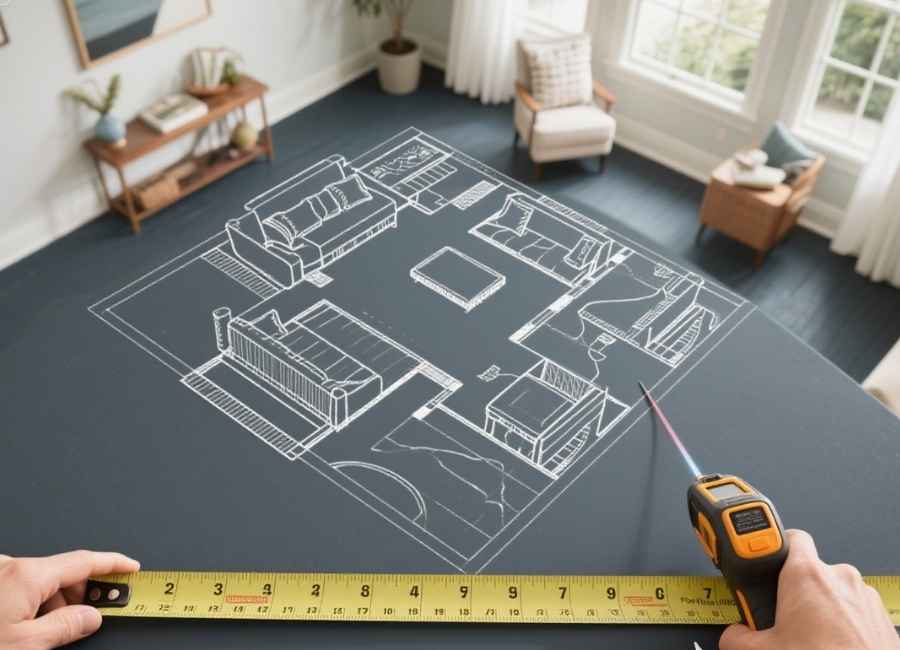
Once you know your style, it’s time to plan your space. Making a floor plan helps you see what will fit and keeps the room from feeling crowded.
Measure and Draft a Floor Plan
Start by measuring your room accurately. A laser measuring tool can make this quick and easy. Then, use a free online tool like FloorPlanner to create a simple draft of the space. This will help you visualize how different pieces of furniture will fit and ensure there’s enough clearance for walkways. As a rule of thumb, you should aim for at least three feet of space for major traffic paths. (The Library: How to Get Your Living Room Layout Right, 2025)
Another easy way is to use painter’s tape to mark out where furniture would go on your floor. This lets you see how much space a sofa or table will take up and helps you avoid buying pieces that don’t fit.
Step 4: Research and Select Key Furniture Pieces
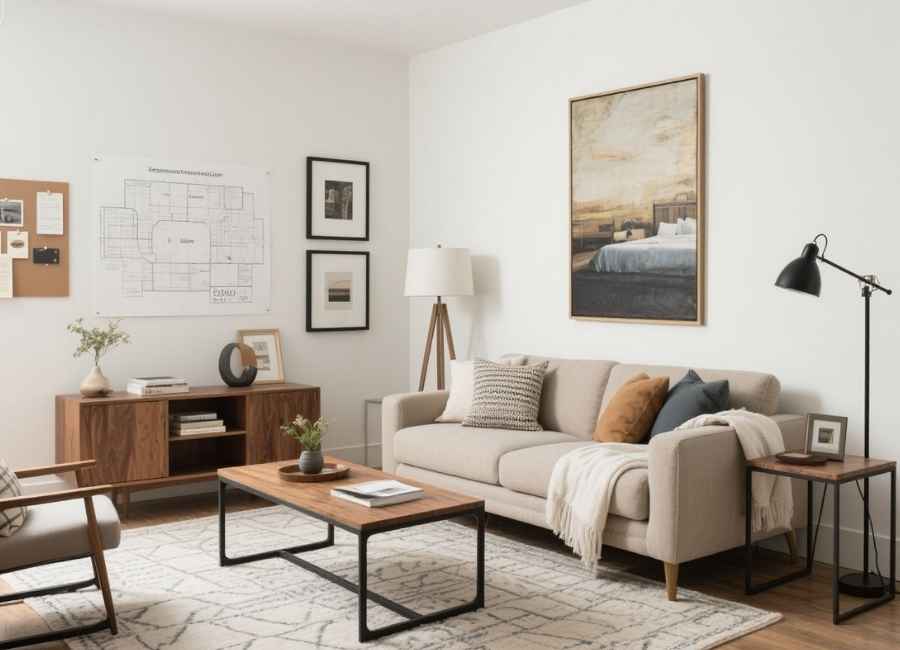
Now you’re ready to start shopping. Keep your mood board and floor plan handy so you stay focused.
Start with a Focal Point
Don’t try to pick everything at once—it can get overwhelming. Start with the main piece in the room, like the sofa, bed, or a big piece of art. Once you have your main item, it’s easier to choose other pieces that go with it.
Stick to Your Budget
Sticking to your budget is important. For example, if you have $5,000 for your living room, spending $3,000 on a sofa doesn’t leave much for a coffee table, rug, or lights. Try to pick about three options in each category to keep things simple. Using a web clipper can help you save links to products you like.
Create Cohesion with Tones
A good way to make your room feel put together is to repeat wood or metal finishes at least twice. (Expert Tips for Mixing Wood Tones in Your Home, n.d.) For example, if your coffee table has black metal legs, you could add a black metal lamp or picture frames. This makes the room feel more connected and helps you decide what to buy.
Step 5: Build Your Room with a Digital Board
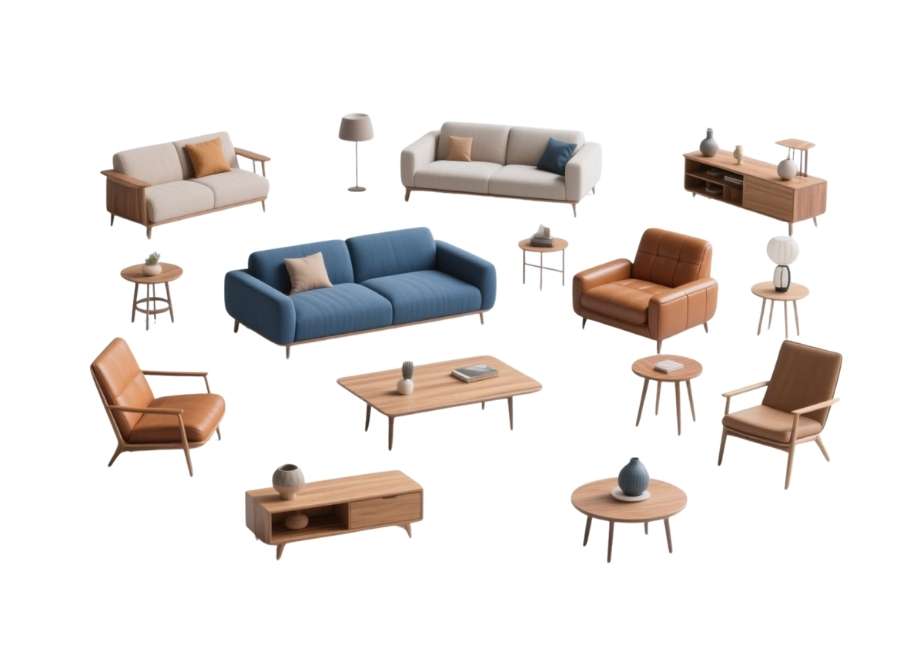
Before you buy anything, make a digital mood board with your top picks. This lets you see how everything will look together.
Assemble Your Pieces
You can use Milanote or even a basic presentation slide to put together pictures of your furniture choices. Most product photos have a background, but you can use a free tool like Remove.bg to make them transparent for a cleaner look.
Arrange the pieces on your board, scaling them to a realistic size to get an accurate representation. This is where you can play with combinations and see how different items interact.
Choose a Color Palette
A color palette is essential for a balanced room. You can generate a palette based on the images on your board or select your own. A good rule of thumb is to combine both warm and cool tones. Blues and cool metals like polished nickel are considered cool, while yellows, woods, and leathers are warm. A well-balanced room will feature a mix of both, along with some neutrals to ground the space. (Understanding Warm vs Cool Colors Is the Easiest Way to Prevent Interior Schemes From Feeling Flat — Here’s How Designers Do It, 2025) This creates an inviting atmosphere and avoids a room feeling too sterile or too overwhelming.
Step 6: Pay Attention to Scale and Proportions

One of the most common design mistakes is choosing furniture that is the wrong size for the room or for other pieces.
- Rugs: A rug that’s too small can make a room feel cramped. Generally, a carpet should be at least 15cm (6 inches) wider than your sofa on both sides. The front legs of the couch and any armchairs should rest on the rug. In a larger room, you can have all furniture legs on the carpet to define the seating area. (How to Choose the Right Rug Size: Your Rug Size Guide, n.d.)
- Coffee Tables: The coffee Table should be about half to two-thirds the length of your sofa. For a sectional, it should be half to two-thirds the length of the main seating section (excluding the chaise). The height should be the same as or slightly lower than the sofa cushions. (Schuneman & Nate, n.d.)
Step 7: Accessorize and Style
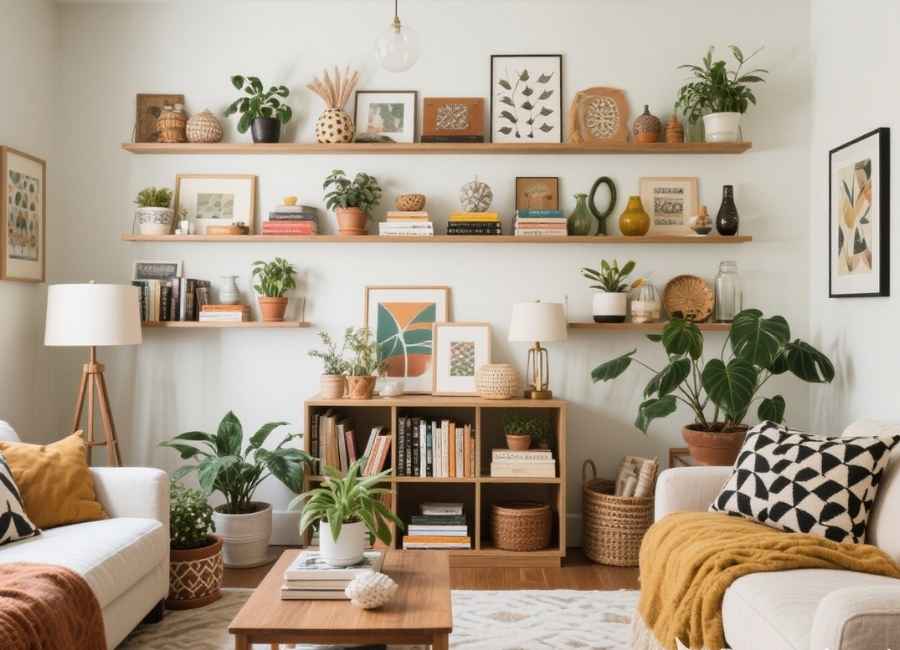
The last step is styling. This is your chance to add your personality and make the room feel like yours. Things like decorations, lamps, books, and plants add color, texture, and life.
Don’t be afraid to experiment with arrangements. Move things around, try different combinations, and see what feels right. Styling is an ongoing process, and it’s common to make changes over time as your tastes evolve or you find new treasures.
Create a Space You Love
Designing a room takes time and patience, but having a plan makes it much easier and even fun. When you think about what you need, pick your style, and plan your layout, you can choose furniture that makes your space both beautiful and personal. It’s worth the effort when you walk into a room you love to relax in.







